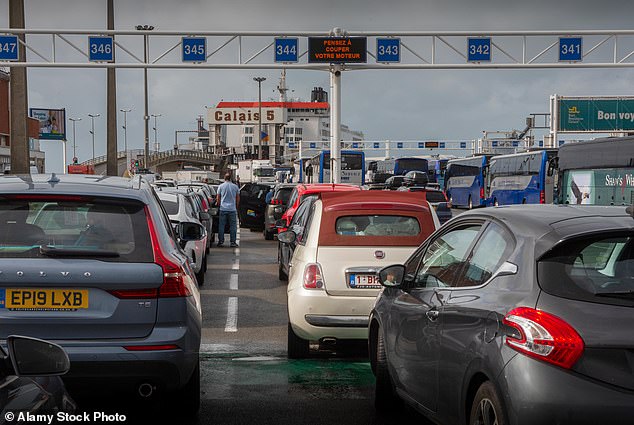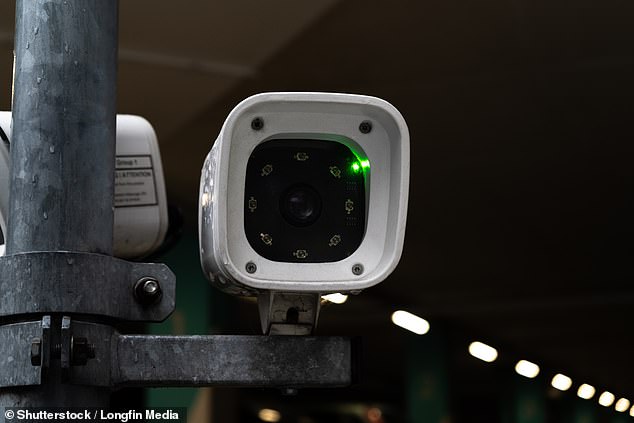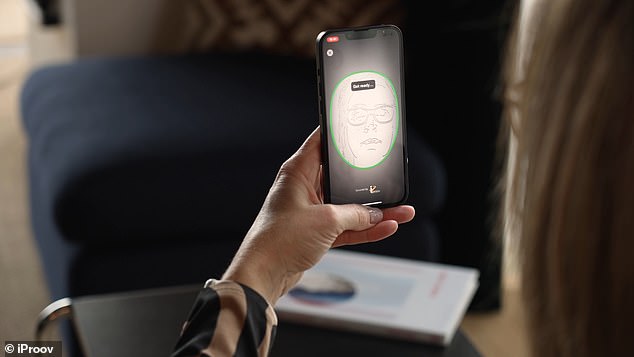The worst part of any driving holiday is undoubtedly the fumble for passports: the dread that sets in as a stern border guard stares you down while you try to remember if you put them in the glovebox, the door cubby, or the kids’ lunchbox.
But that could be a thing of the past thanks to ‘contactless corridors’ – camera-powered biometric tech that doesn’t require you to flash your passport or get out of the car. Instead, your face is your passport.
The Home Office has been trialling facial recognition technology at maritime ports for passengers returning to Britain from elsewhere in a bid to cut waiting times. It could become the norm from as early as next year.
At the moment, travellers are required to hand their passports to a Border Force officer who then scans them in a biometric reader one-by-one – a time-consuming task, particularly during the holidays when cars are groaning with families.
Instead, you’ll provide your documents ahead of time and, in theory, glide through border control at Calais, Dunkirk or any other UK maritime border in seconds without any need to wait for your documents to be inspected.
The new tech could either use super high-resolution cameras to photograph subjects through their windscreens or have them look at a roadside camera to verify their identity against their travel documents.
Staff will still be on hand for ‘passengers of interest’ – namely anyone on watchlists, or flagged as having safeguarding or intelligence concerns, as well as those whose identity doesn’t match up to their passport’s biometric data.
If successful, the technology could be rolled out at airports too – doing away with the dreaded biometric e-gates.

Cars queueing at the Port of Calais. For those coming back into Britain, lines like this could soon be a thing of the past

High-resolution cameras could be used to scan drivers’ faces as they make their way towards the incoming UK border (file picture)
Then-Home Secretary Priti Patel announced the scheme in July 2022 – first envisioned for use at airports. But it has since moved to test the technology
Between November and February, it enlisted four firms to trial a number of methods of identifying travellers using their biometric data without needing them to step out of their cars or hand over documents.
Precise details of how the technology could work are under lock and key at present.
A source told the Telegraph: ‘Under the new system, instead of getting your passports out, you look at the camera.
‘They have these really high-powered cameras that can look through the windscreen and take a picture of your face and match it to the face on the database.
‘Assuming all is well, then you get the green light and you drive through the border. The other option is that you wind down your window and you all look at an iPad. The aim is to use the technology on maritime and rail routes, then on air routes.’
One of those firms, iProov, said the aim was to create a future where border control was ‘seamless, secure and automated’ rather than being handled by people.
but iProov CEO Andrew Bud told MailOnline he had been encouraged by his firm’s methods of authenticating people’s identities.
‘This is about convenience – when we have greater passenger volumes and security measures,’ he said.
The specific goal for his firm during the trial was to determine if cameras could capture images of the occupants of a car and verify their identities without human intervention – a ‘really hard’ problem he is confident the company has solved.
iProov’s technology was based on that used for Eurostar SmartCheck – a contactless corridor for passengers travelling to Europe from London St Pancras via train.
It rolled out the tech as an option for train travellers in July 2023, allowing them to verify their passport and their identity with a selfie in advance – so they could walk through border control at the station without stopping.
The firm said its software could verify a person’s identity automatically in less than two seconds. It was entirely optional, meaning people could stick to old-fashioned border checks if they preferred.
‘The people who used it loved it,’ Mr Bud added. ‘They could walk straight through and didn’t even need to pause at the camera.
‘Personally, I think this is going to transform the inbound passenger experience as much as SmartCheck did for Eurostar.’
But while it could make long waits to get back into Britain off of the ferry a thing of the past, privacy campaigners have expressed general concerns over the growing use of facial recognition.
Mr Bud said that he did not understand the concerns – given that people have already provided facial data via their passport, against which the picture is compared to speed up the process of coming back into Britain.
Under GDPR, Border Force can retain data on UK arrivals and departures for ‘as long as it is necessary’.
‘I struggle to understand these concerns but it is important we don’t brush them under the carpet,’ Mr Bud says.
‘Preserving civil liberties is very important to us. This is face verification – if we’re talking about the Border Force capturing people’s faces, they already have.
‘They have access to the faces of British citizens through the Passport Office and foreign citizens through things like the Electronic Travel Authorisation.
‘They don’t get any information they don’t have already. They’re just making sure the people coming in are the ones they are expecting.’

iProov, one of the firms involved in the Home Office test, has previously created similar ‘contactless corridor’ technology for Eurostar (pictured, the tech at work)

That system saw users take a selfie and scan their passport to verify their identity in advance (above). It is not known exactly how the Home Office system may work

The technology may also be rolled out at airports in future – which could effortlessly speed up returning to Britain by any means

But Eurostar scrapped that tech last month ahead of the EU’s new Entry-Exit System (EES) rolling out in October.
EES, which aims to stamp out illegal migration and improve border security in the Schengen travel area, will require UK, US and other non-EU travellers to provide their fingerprints the first time they enter the bloc.
It will replace the manual stamping of passports with digital picture or fingerprint capture.
Eurostar, Eurotunnel and the Port of Dover have each been given £3.5million to get ready for the EES, expected to launch in October, which will allow passengers to do the prerequisite checks before they travel.
That will be followed by the European Travel Information and Authorisation System (ETIAS) sometime towards the end of 2026, which will require UK travellers to apply for authorisation to enter Schengen area countries.
But that means the ‘contactless corridors’ can only be practically used on the way back into Britain – meaning that at least the journey back will be less painful than the one on the way out.
How the Home Office’s contactless corridors at maritime borders will work is not yet clear – and is subject to the government deciding how it wants to proceed based on the tests conducted in the last few months.
A spokesperson for the Home Office previously said: ‘We use a wide range of techniques and technology to protect our border security but we do not comment on trials of specific equipment.’







